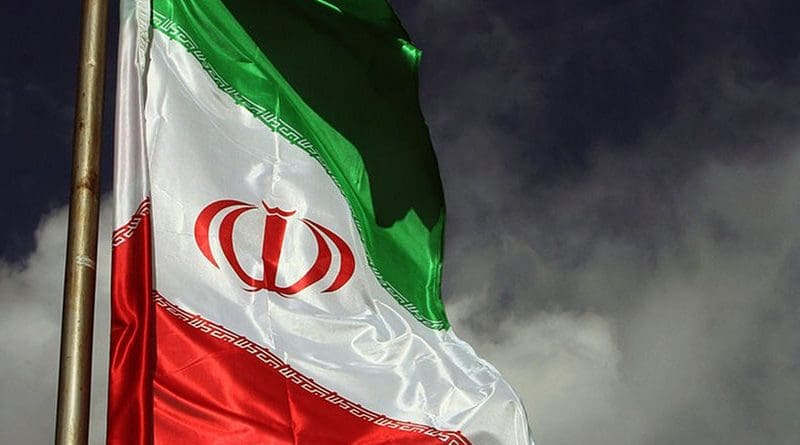Physical Elimination; If Impossible, Demonization – OpEd
By Hamid Enayat
Tehran’s newspapers spread the false rumor that Maryam Rajavi, the leader of the Iranian opposition and former Secretary-General of the People’s Mojahedin Organization of Iran (PMOI), had been hospitalized due to illness. This came just a day after Le Monde published a lengthy four-page article attacking the PMOI, the main force of resistance against the Tehran dictator, using the same labels that the regime has been using for forty years. Worse, the dissemination and publication date were announced by “NGOs” linked to the regime’s intelligence services. But why?
In the 1980s, Ayatollah Khomeini, the founder of the Islamic Republic, falsely accused the Mojahedin of setting buses or farms on fire. This was all aimed at discrediting the organization, which enjoyed widespread support from the younger generation, particularly girls and women, and had a history of brilliant resistance against the Shah’s dictatorship.
Ayatollah Khomeini Drinks the “Poison of Ceasefire”
In 1988, when the National Council of Resistance of Iran (NCRI), with the Mojahedin as its main pillar, managed to stop Ayatollah Khomeini’s warmongering ambitions—who claimed he would fight to the last house in Tehran—and forced him to “drink poison” (in his own words) and accept the ceasefire resolution. Khomeini paid the price for his withdrawal by massacring approximately thirty thousand PMOI prisoners. This war had cost the Iranian people millions of dead, injured, and mutilated, with at least a million students sent to the front and two trillion dollars spent. Khomeini’s pretext for this massacre was that the PMOI’s National Liberation Army was attempting to take Tehran during the last days of the Iran-Iraq war. However, according to various testimonies, including those from Amnesty International, the decision to purge PMOI prisoners had been made well before the 1988 summer attack, and concrete measures had been put in place to execute it.
Khamenei’s Revenge Against the Mojahedin
We recall that Khamenei deployed all his efforts to make Ebrahim Raisi president in the election leading to Hassan Rouhani’s second term. The Mojahedin, who had launched significant activities in Iran during this election with the slogan “Neither Charlatan Nor Executioner,” revealed and denounced Ebrahim Raisi as the executioner of the 1988 massacre. Rouhani also exploited this slogan and the Mojahedin’s activities to prevent Khamenei from bringing Raisi out of the ballot box. Khamenei knew that if he tried to get Raisi elected at any cost, a major revolt like that of 2009 awaited him. He then took his revenge on the Mojahedin by attacking their camp in Iraq.
Hundreds of examples can be cited regarding the religious dictatorship’s actions to assassinate Mojahedin leaders abroad or massacre them. Where it could not physically eliminate them, it tried to diabolize its enemy to put them out of the battlefield.
Preparation for Terrorism
A show trial against 104 PMOI members resumed in Tehran after several months of interruption. The judge, making the session public before delivering the final verdict, declared: “We warn the countries hosting the accused in this case that hosting these individuals is considered a crime under international conventions on counterterrorism. Countries like France should reconsider their hosting of these accused of terrorist acts and crimes against humanity and cooperate with international organizations to extradite them to Tehran. Likewise, the Albanian people, by hosting the accused in this case, should demand their government to extradite them to Iran.”
Doesn’t the Le Monde article complement the show trial in Iran, one of whose goals is to prepare the ground for assassinating its opponents abroad? This is exactly what happened in Spain with the failed assassination attempt on a former vice-president of the European Parliament by a criminal wanted by the French police and recruited by Tehran nearly killed this Spanish politician. His only crime was supporting the Iranian resistance.
Currently, after the Mojahedin denounced the religious dictator in Tehran as responsible for the war in the Middle East, stating that peace could only be established without him, and after several thousand resistance units under their command boycotted the parliamentary elections, reducing participation to less than 5%, the entire world seeks an alternative to this regime. At that moment, after the announcement of significant activities inside and outside the country by the NCRI, twenty thousand propaganda actions against the wall of repression in Iran have been carried out by resistance units, each punishable by death. The regime inevitably turns to demonization. Thus, a four-page article against the Iranian resistance published in Le Monde goes a long way.
In a book published with the help of her children and friends, the late Danielle Mitterrand, former French first lady, clearly states that no popular resistance can reach its goal without being insulted and slandered. Mrs. Mitterrand herself was accused of terrorism while fighting occupation in the ranks of the resistance against Nazism.
This demonization is not new to the Iranian people. Currently, all newspapers in Iran are forced to publish on a daily basis, a large volume of distorted information on the Mojahedin. Despite all the such campaigns that have existed for forty years, and particularly since the 1988 massacre, this organization has managed to organize several thousand resistance units on Iranian soil under the rule of a ruthless dictatorship.
Who should we believe: the judgment of the Iranian people regarding this organization or what the regime’ propaganda’s mouthpieces say against the resistance?

